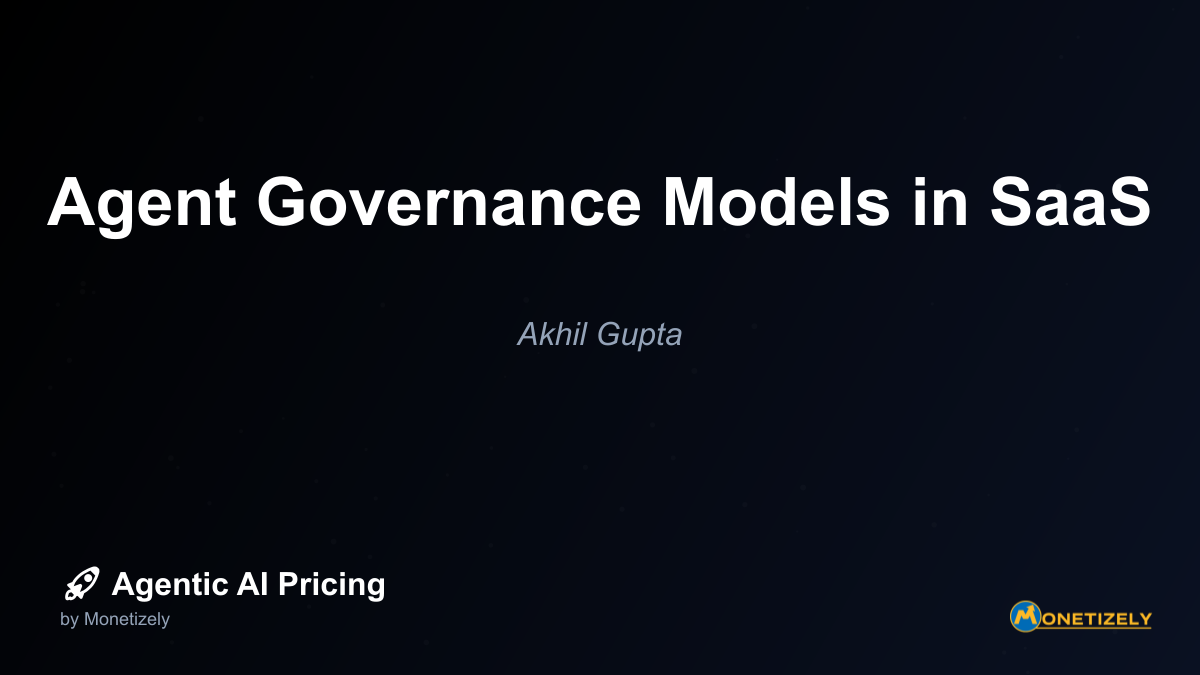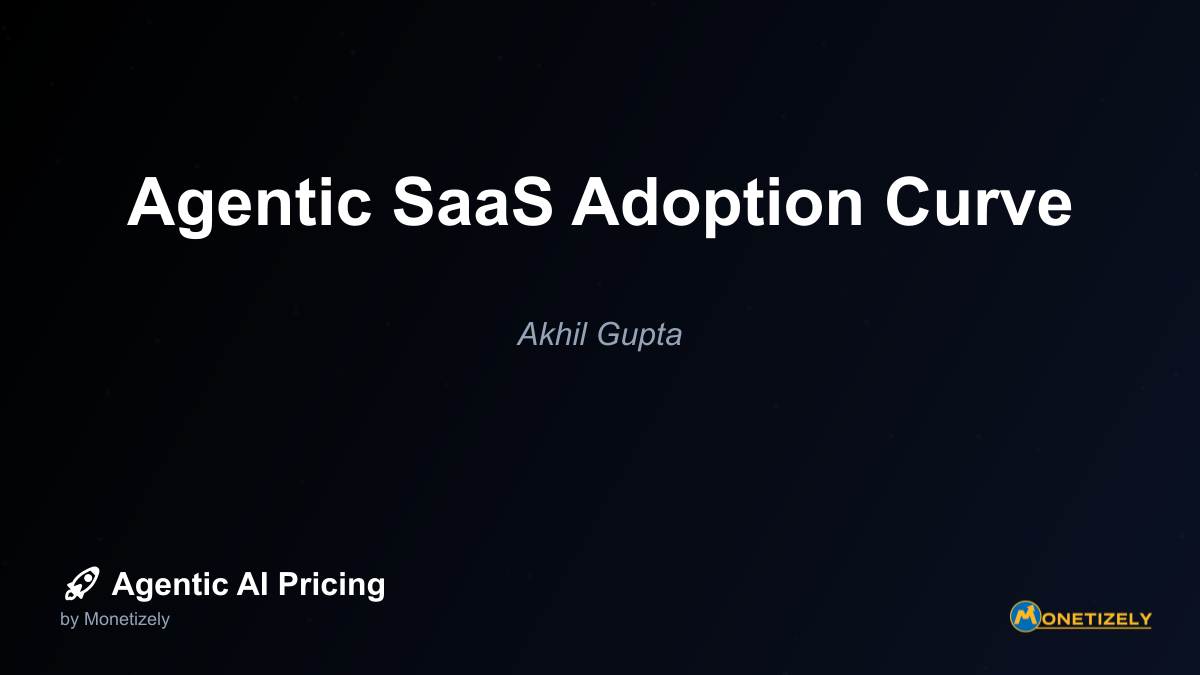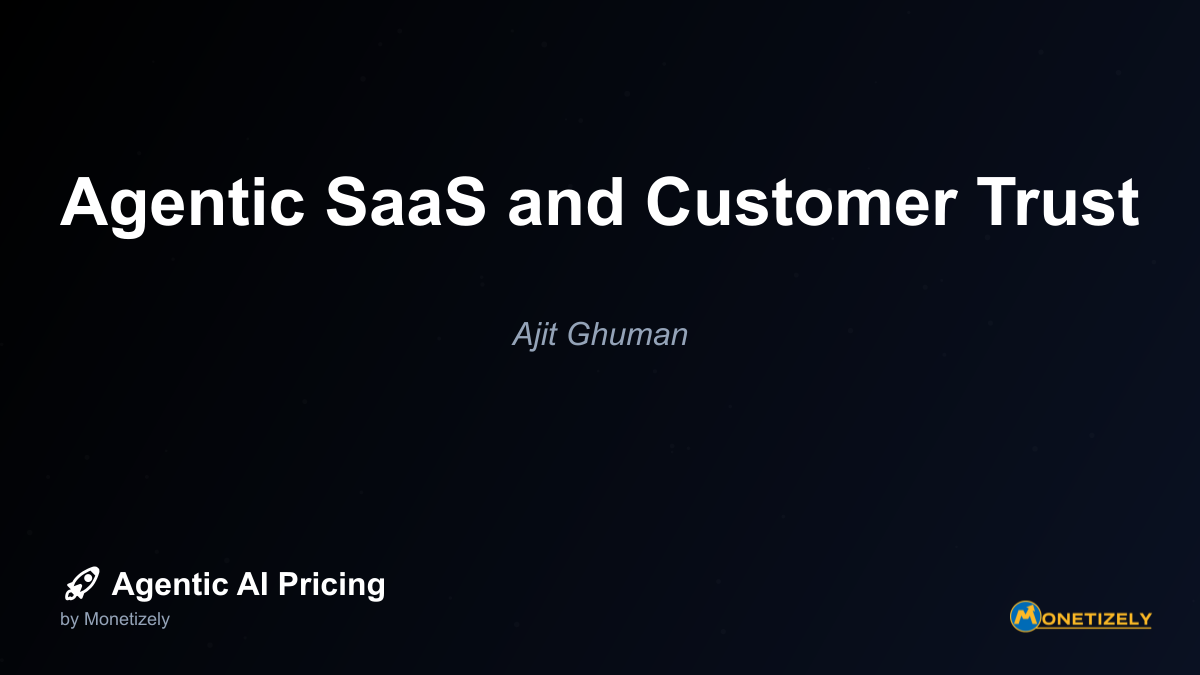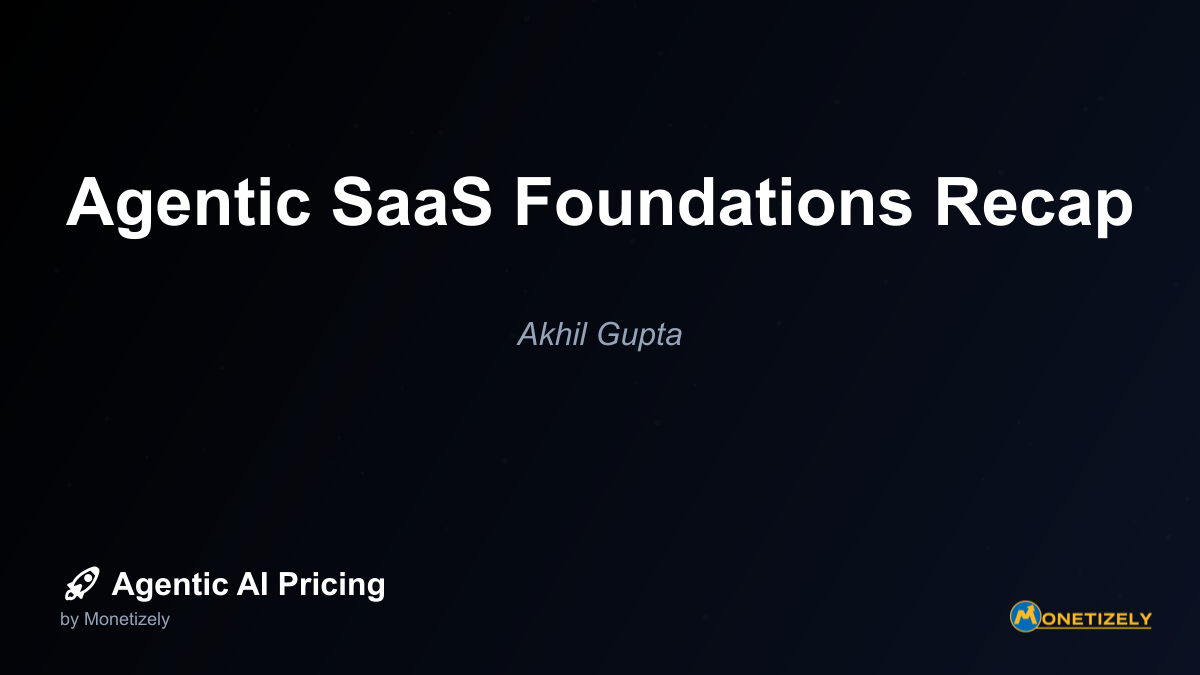· Ajit Ghuman · Agentic SaaS Fundamentals · 5 min read
The Evolution from SaaS to Agentic SaaS
AI and SaaS Pricing Masterclass
Learn the art of strategic pricing directly from industry experts. Our comprehensive course provides frameworks and methodologies for optimizing your pricing strategy in the evolving AI landscape. Earn a professional certification that can be imported directly to your LinkedIn profile.
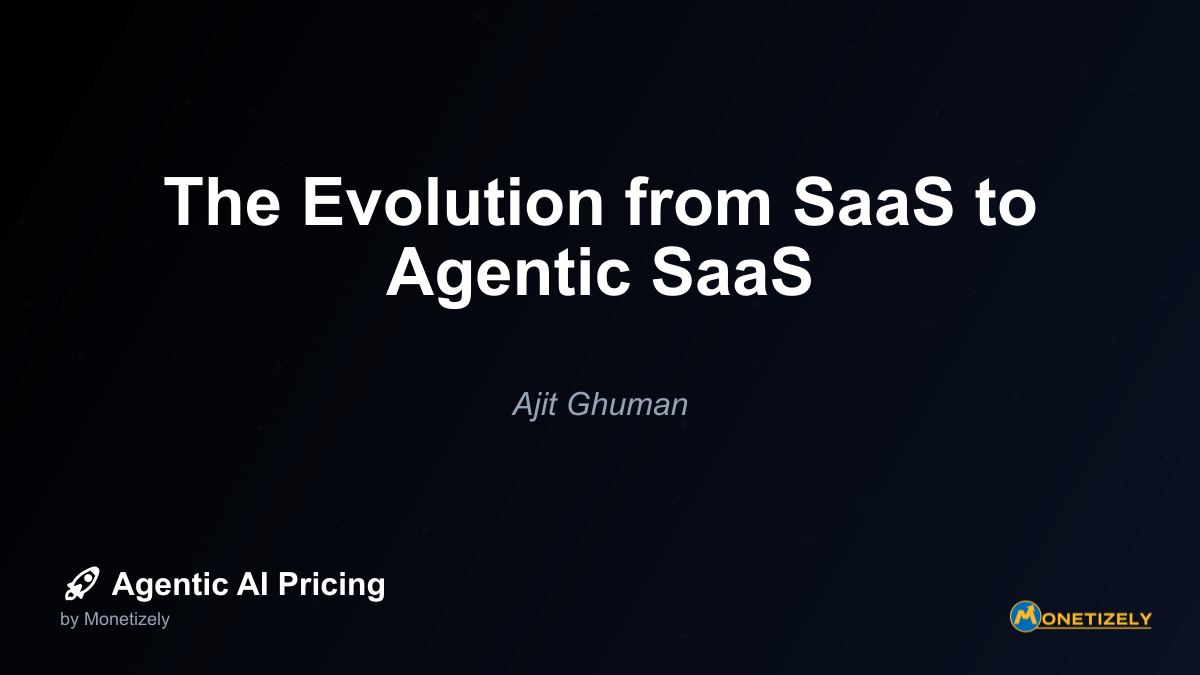
The adoption of agentic SaaS often catalyzes significant organizational restructuring:
- Flatter hierarchies: Reduced need for operational middle management
- Cross-functional integration: Breaking down of traditional departmental silos
- Expertise redefinition: Evolution of roles toward strategic oversight
- Team composition changes: Greater emphasis on strategic and creative skills
- Governance transformation: New approaches to oversight and accountability
Organizations effectively leveraging agentic solutions typically undergo substantial structural evolution, developing more agile and adaptable organizational models.
Economic Models
Agentic SaaS is driving fundamental changes in business economics:
- Fixed to variable cost shifts: Replacing permanent staff with scalable solutions
- Capital reallocation: Moving investment from operations to differentiation
- Margin expansion: Improving profitability through operational efficiency
- Growth decoupling: Separating revenue increases from cost escalation
- Valuation enhancement: Improving key metrics that drive business valuation
These economic transformations often result in significantly improved financial performance and competitive positioning.
The Evolution of Pricing Models
As SaaS has evolved toward agentic capabilities, pricing models have undergone parallel transformation, reflecting changing value propositions:
Traditional SaaS Pricing
Early SaaS solutions typically employed relatively simple pricing approaches:
- Per-user subscriptions: Charging based on number of accounts
- Tiered feature access: Different price points for varying capability sets
- Storage-based pricing: Costs tied to data volume requirements
- Limited usage metrics: Basic constraints on system utilization
These models primarily reflected the cost of providing access rather than the value delivered, creating misalignment between vendor economics and customer outcomes.
Agentic SaaS Pricing Evolution
The transition to agentic capabilities has driven significant pricing innovation:
- Outcome-based models: Pricing tied directly to achieved results
- Value-share arrangements: Vendors participating in created economic benefits
- Risk-reward structures: Pricing contingent on meeting performance targets
- Composite metrics: Complex formulas reflecting multiple value dimensions
- Dynamic adjustment mechanisms: Prices evolving based on delivered value
These sophisticated approaches better align vendor compensation with customer success, creating more sustainable relationships and enabling premium pricing for superior outcomes.
Challenges in the Agentic SaaS Transition
Despite its advantages, the evolution toward agentic SaaS presents significant challenges for both providers and customers:
For SaaS Providers
Organizations developing agentic solutions face several critical hurdles:
- Technical complexity: Creating truly autonomous capabilities requires sophisticated AI
- Outcome responsibility: Taking accountability for results rather than features
- Business model transformation: Adapting to new pricing and revenue approaches
- Trust establishment: Building confidence in autonomous operations
- Organizational adaptation: Developing new skills and structures
These challenges require substantial investment and often necessitate complete reimagining of product development approaches.
For Customers
Organizations adopting agentic solutions encounter their own set of challenges:
- Control concerns: Addressing discomfort with reduced direct oversight
- Skill evolution: Transitioning staff from operational to strategic roles
- Integration complexity: Connecting autonomous systems with existing infrastructure
- Change management: Helping employees adapt to new working relationships
- Risk assessment: Evaluating potential failures in autonomous operations
Successful adoption typically requires careful change management and phased implementation approaches.
The Future Trajectory: Where Agentic SaaS Is Heading
The evolution from traditional to agentic SaaS represents just the beginning of a fundamental transformation in business software. Several key trends are emerging that will shape the next phase of this evolution:
1. Multi-Agent Ecosystems
Rather than isolated agentic applications, we’re moving toward interconnected systems of specialized agents:
- Collaborative problem-solving: Multiple agents working together on complex challenges
- Specialized expertise combinations: Agents with different capabilities cooperating
- Negotiated resource allocation: Autonomous determination of priority and focus
- Cross-domain optimization: Holistic improvements across organizational boundaries
- Emergent solution development: Novel approaches arising from agent interaction
These ecosystems will dramatically expand the scope and impact of agentic capabilities.
2. Human-Agent Teaming Models
The relationship between knowledge workers and agentic systems will continue to evolve:
- Complementary capability pairing: Matching human and AI strengths
- Adaptive autonomy levels: Dynamically shifting control based on context
- Continuous learning relationships: Mutual improvement through interaction
- Personalized working styles: Adapting to individual preferences and approaches
- Trust calibration mechanisms: Building appropriate reliance over time
These sophisticated teaming models will maximize the combined potential of human creativity and machine efficiency.
3. Outcome Guarantees
Agentic SaaS will increasingly provide explicit performance commitments:
- Results-based contracts: Formal guarantees of specific outcomes
- Financial consequence structures: Monetary implications for performance
- Verification frameworks: Transparent measurement of achievement
- Risk-sharing mechanisms: Balanced distribution of uncertainty
- Performance insurance: Third-party backing of outcome promises
These guarantees will accelerate adoption by reducing perceived risk and increasing accountability.
4. Ethical and Governance Frameworks
As agentic systems gain autonomy, new approaches to oversight will emerge:
- Transparent decision explanation: Clear articulation of reasoning
- Value alignment verification: Ensuring actions match organizational priorities
- Operational boundary enforcement: Preventing unacceptable behaviors
- Audit trail requirements: Comprehensive recording of actions and outcomes
- Intervention mechanisms: Methods for human override when necessary
These frameworks will balance the benefits of autonomy with appropriate safeguards.
Conclusion: Embracing the Agentic Future
The evolution from traditional SaaS to agentic SaaS represents a fundamental shift in how organizations leverage technology – moving from tools that require human direction to partners that independently pursue business objectives. This transition offers unprecedented opportunities for operational efficiency, strategic focus, and competitive advantage.
Organizations that successfully navigate this evolution will likely enjoy significant advantages in their markets. Those that resist may find themselves at a growing disadvantage as competitors leverage increasingly autonomous capabilities to reduce costs, accelerate operations, and enhance decision quality.
The path forward requires thoughtful consideration of how agentic capabilities can best serve organizational objectives, careful selection of appropriate solutions, and strategic approaches to implementation and change management. By embracing this evolution with clear vision and deliberate execution, organizations can position themselves to thrive in the emerging agentic future.
As with previous technological revolutions, the winners will not necessarily be those with the most resources, but rather those who most effectively adapt their strategies, structures, and cultures to capitalize on the new possibilities that agentic SaaS creates.
Co-Founder & CEO
Ajit is the author of Price To Scale, a top book on SaaS Pricing and is the Founder of Monetizely. Ajit has led and worked in pricing and product marketing at firms like Twilio, Narvar and Medallia. His work has been featured in Forbes and VentureBeat. Ajit regularly consults with software companies from Seed stage to post-IPO on pricing strategy. Ajit is also a highly-rated co-instructor for 'The Art of SaaS Pricing and Monetization' on Maven.
Pricing Strategy Audit
Let our experts analyze your current pricing strategy and identify opportunities for improvement. Our data-driven assessment will help you unlock untapped revenue potential and optimize your AI pricing approach.

